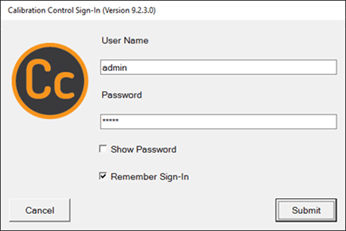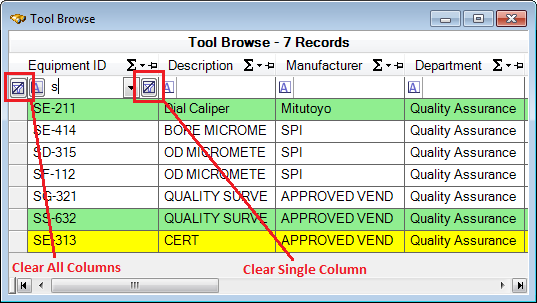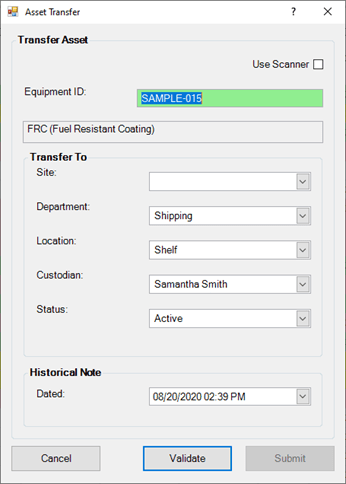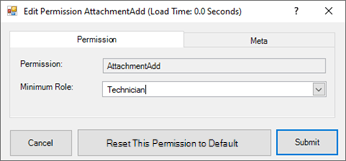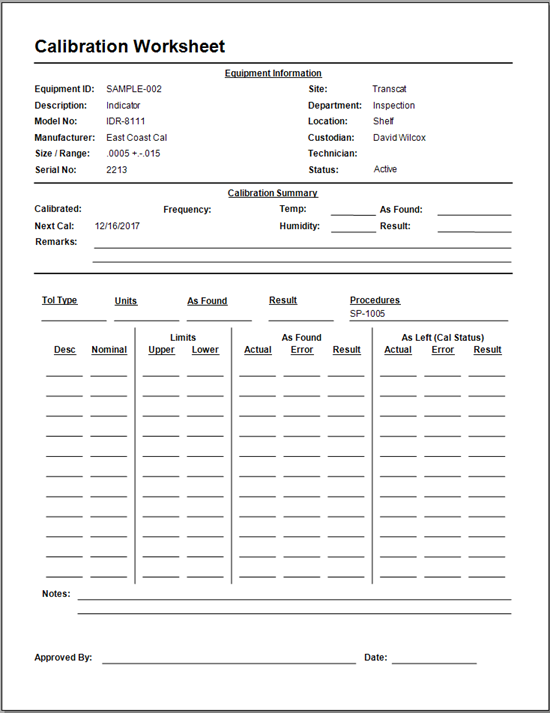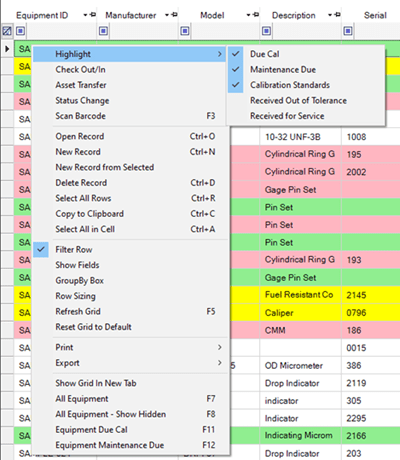Electronic Torque Wrench Calibration
Purpose
The purpose of this procedure is to provide general instructions for the calibration of electronic torque wrenches.
Scope
This general procedure shall be used in the absence of any specific calibration procedure for electronic torque wrenches.
Procedure
The Electronic Torque Wrench is a precision hand tool designed to permit accurate manual tightening of threaded fasteners. The tool is designed around a conventional ratchet wrench with a self-contained microprocessor built into the wrench handle. The control housing contains the operating controls, indicator lights, audible alarm, digital display and the control electronics. A protective end cap at the end of wrench handle provides access to a 12-pin receptacle for connecting a battery charger, XY platter, interface, or test connector. The wrench has the capability of displaying the desired angle of tightening and using the bolt and joint mechanical properties for optimum tightening force. However, this procedure will be limited to straight torque calibration.
Preliminary Instructions and Notes
- Read this entire procedure before beginning the calibration.
- Calibration shall be performed in an environment that conforms to Manufacturer Specifications.
- The electronic torque wrench will hereafter be referred to as the Instrument Under Test (IUT).
- Verify that the IUT is clean.
- Visually examine the IUT for any condition that could cause errors in the calibration.
- If any of the requirements cannot be met, refer to the applicable manufacturer manual.
- If a malfunction occurs or a defect is observed while calibration is in progress, the calibration shall be discontinued and necessary corrective action taken; if corrective action affects a measurement function previously calibrated, the function shall be recalibrated before the remainder of the procedure implemented.
Reference Material
Applicable Manufacturers Manual or Brochures.
Specifications
The specifications of the IUT are determined by the applicable manufacturer's documentation. If the manufacturer's documentation is not available, then the specifications identified in this procedure are used.
Specifications
| Accuracy | Range |
| +/- 1.5% of full scale | 0 to 400 foot pounds |
Equipment Required
The Standards listed below should be selected on the basis of their higher accuracy level when compared to the unit under test. Equivalent Standards must be equal to or better than the Minimum-Use-Specification.
Minimum-Use-Specifications for Standards listed are 1/4 the accuracy required by the IUT.
Required Equipment
| Standard Used | Range | Accuracy |
|---|---|---|
| Torque Tester | 0 to 50 ftlbs | +/- 0.25% FS |
| DMM | 3V | +/- 0.01% |
Detailed Inspection
- Visually inspect the components of the IUT for dust, dirt, grease, oil and corrosion. Clean as necessary.
- Inspect the IUT controls for freedom of movement, loose, or missing knobs. Repair as necessary.
- Inspect the control housing top cover for cracks, loose, or missing screws. Repair as necessary.
- Inspect the control housing back cover plate for loose or missing screws, damaged or missing access plugs, and placards. Repair or replace as necessary.
- Inspect protective end cap, connector, and circlip for damage and proper installation. Repair as necessary.
- Inspect molded plastic sleeve on the shaft of the ratchet head for damage. Replace if necessary.
- Inspect socket drive for excessive looseness and distortion. Replace as necessary.
- Functionally check the ratchet toggle lever and ratcheting mechanism for proper operation. Repair or replace as necessary.
- Inspect reset button for looseness in the wrench housing and proper operations.
- Functionally check status indicators and audible alarm for proper operation.
Detailed Procedure
- Remove the end cap from the IUT handle.
- Turn on the Torque Tester and allow a 10 minute warm up period.
- Mount the IUT to the Torque Tester.
- Connect the Platter Interface to the wrench using the cable provided.
- Attach one end of the cable to the receptacle in the wrench handle and attach the opposite end of the cable to the platter interface receptacle.
- Connect two leads to the input terminal of the Multimeter (hi and low) and attach the opposite end of the leads to the angle and torque jacks on the Plotter Interface Unit.
- Turn the Multimeter on-off switch to the "on" position and select the 3V range.
- Remove two screws and the plastic cover to expose the adjusting knobs, angular, torque and mode.
- Turn the mode selector switch to the "torque control setting".
- Hold down reset button, located on the handle of the IUT, and adjust torque setting control knob until digital display indicates zero.
- Release reset button and read and record the voltage indicated on the multimeter.
- Hold down the reset button and adjust torque setting control knob until the digital display indicated 50 foot-pounds.
- Turn the angle potentiometer arm clockwise as far as it will go.
- Actuate the Torque Tester to read exactly 50 foot pounds on the display screen.
- Read and record the torque indicated on the digital display of the IUT.
- Turn the angle potentiometer arm counter clockwise to approximate center of the IUT head.
- Release the Torque Tester back to zero load and read and record the voltage displayed on the multimeter.
- Repeat steps 12 through 17 at 50 foot-pound intervals through the full range of the IUT.
- Repeat step 18 for a complete second calibration run.
- Adjust the output voltage at each calibration point by subtracting the no load voltage from the voltage recorded at each calibration point.
- Calculate the average volts per foot-pound by taking the sum of corrected voltage readings and dividing by the sum of IUT readings.
- Disconnect the multimeter and Plotter Interface and replace the protective cap on the IUT.
- Replace the plastic cover over the adjusting knobs and remove the IUT from the Torque Tester.
CAUTION: Make certain the reference of the cable connector is properly aligned with the groove in the receptacle of wrench.
Note: The audible alarm should activate and the control system status lights should be on when the pre-set torque valve is reached.
Reason for Reissue
Revision A - First Release

